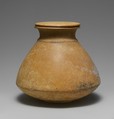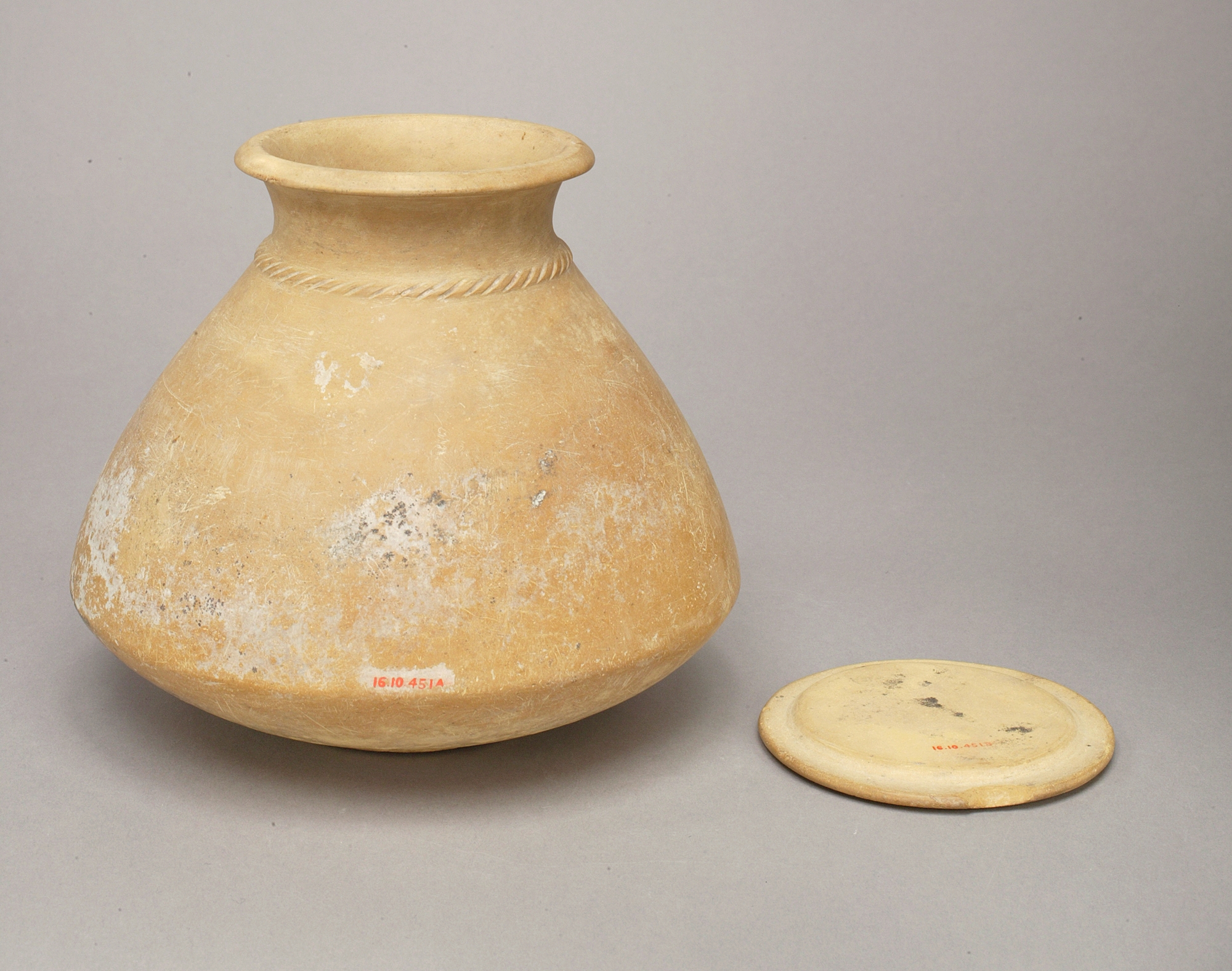Carinated Stone Jar with Rope Pattern
New Kingdom
This limestone vessel with its baggy shape and sharp carination of the lower body is a traditional Egyptian shape called the deshret-jar. The form is common in pottery found in burials from the Old Kingdom onward. A raised band with carved diagonal lines imitating a twisted cord decorates the base of the neck. The vessel was deposited in the lowest chamber of a pit tomb cut into the forecourt of a reused Middle Kingdom tomb and belonged to the burial of a man named Nakht. The tomb was covered over during the construction of the causeway of Hatshepsut's mortuary temple sometime after year 7 of her reign
Due to rights restrictions, this image cannot be enlarged, viewed at full screen, or downloaded.
This artwork is meant to be viewed from right to left. Scroll left to view more.




